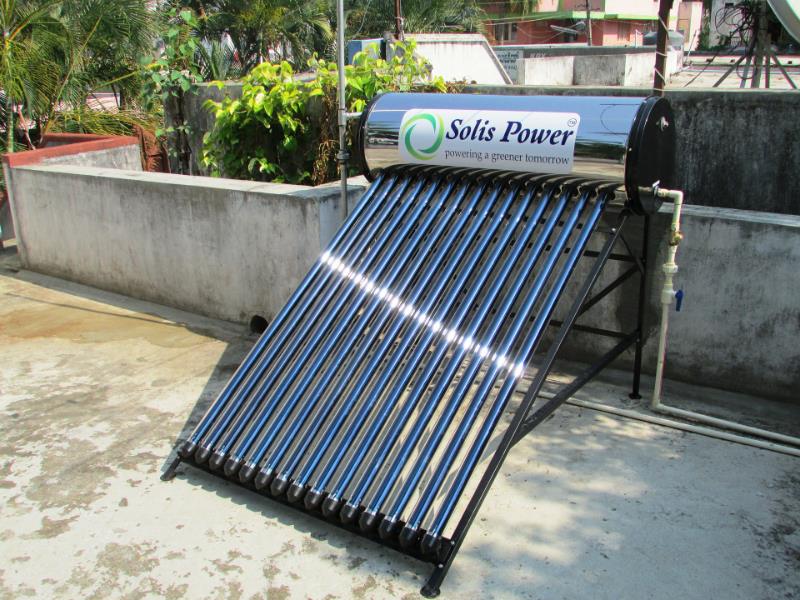Hot Water Systems
Home / Wiki / Hot Water SystemsLast updated Wed 05 Jan 2022
Heated water remains a central requirement in modern life, allowing individuals to safely clean dishes and clothes, while also offering the luxury of a heated shower. A hot water system in a home's plumbing, then, remains an incredibly important addition to that home due to the central role these systems play in daily life.
What Is A Hot Water System?

A kettle is an example of a small-scale, tank based electric water heater
On a simple level, a hot water system is any system that allows users access to heated water. In modern home plumbing, though, hot water systems are automated, utilising either electricity, gas, or solar energy to heat water and deliver it directly to the user without the need for further intervention from them. These systems come in a variety of arrangements, with some utilising a tank to store heated water while others choose to attempt to heat water directly as it passes to the user.
Instantaneous Hot Water Systems
An instantaneous hot water system, otherwise known as an instant, tank-less, or continuous flow hot water system, is one in which no tank is used to store hot water. Instead, when a hot water tap is opened in the home, the hot water system immediately begins to heat water for delivery. This is done by passing the water through a coiled copper pipe that is directly heated via either a gas burner or electric element. The heat is passed through the copper pipe into the water, which is subsequently sent to the desired location within the home.
These systems are incredibly energy-efficient as they do not expend energy heating tanks of water that may not be used, but, as a consequence, an instant-flow hot water system has no reserve of hot water ready to go at a moments notice, which means that users may face a delay when attempting to access hot water. The size of the copper piping used to heat the water also severely limits the rate of output of these units, with each system coming in different sizes to accommodate homes that may require more hot water than others.
Tank Hot Water Systems
A tank hot water system does not heat water on demand, instead relying on keeping an entire tank of hot water heated which is used to service the user's needs appropriately. Depending on the type of tank in use, the tank may immediately begin warming new water when its current reserve is accessed, or it may wait until the reserve is entirely depleted. In either case, it is possible to encounter issues with the tank's supply of hot water, and many users will find themselves waiting for water to be heated at least once in the lifetime of these units. In most use-cases, however, tank hot water systems are able to reliably and immediately supply users with heated water, making them an excellent choice for anyone that requires reliable hot water.
Typically, there is a thermostat connected to the tank of a hot water system, which controls the heating element, be it electric or gas. This thermostat is used to determine when the water has become appropriately heated, resulting in the heating element being switched off, ensuring no one is subjected to scalding burns.
Solar Hot Water Systems

An example of a solar-powered hot water system
Solar hot water systems are one of the more renewable choices currently on the market. While there is still either a fallback electric or gas system installed for scenarios in which solar heat isn't accessible, such as during weather events or at night, these systems largely rely on heat from the sun to warm water, making them much more energy-efficient and environmentally-friendly than their conventional counterparts. Different solar hot water systems function differently, but some of the more common models include capturing heat from solar panels on the roof and either passing it to a water tank on the ground, a water tank on the roof, or a set of pipes that are immediately adjacent to the solar panels, through which water is run.
Heat Pump Hot Water System
At the forefront of technology rests the heat pump hot water system, which is much more energy-efficient than both the instantaneous and tank hot water systems while being much more reliable than a solar hot water system. The heat pump functions by drawing air from the surrounding atmosphere into the device, where it is circulated around the pump. This motion causes the air to heat up, and that heat can be directed to piping that contains water, allowing the system to deliver hot water.
This pump utilises electricity to function, and can even increase its power draw if the demand is sufficiently high, but the overall cost of operating this unit is much, much lower than the other options available. However, it is worth noting that different units will achieve different effectiveness ratings depending on environmental circumstances, such as where the pump is positioned, what climate it is operating within, and the specifications the specific unit was built to.

This building has a tank-based hot water system at the back of the kitchen.
Heidy Barbera
05 Dec 2025
Verified
I’m just a tenant at a rental property however I had Mitch come for 2 days to undertake some repair works! He was the most helpful, reliable and respectful person I have ever come to my house to do ... more
Rocky Scott
05 Dec 2025
Verified
THE GUY WAS VERY POLITE ,EFFECIENT, FAST AND STRAIGHT FORWARD , TOLD ME WHAT I NEEDED TO KNOW AND HE WAS GOING TO GET THE REALESTATE AUTHORITY BEFORE DOING ANY PROGRESS OR NOT ,HIS WORK ETHICS, MANNER... more
James Ogilvy
05 Dec 2025
Verified
We had the please of Mitch coming through to sort out a bunch of issues. His work is impeccable, and a genuinely great guy. Can not recommend highly enough!

We happily service all areas of Brisbane and beyond. Get in touch today.
And enjoy peace of mind with a dedicated team on call 24/7
